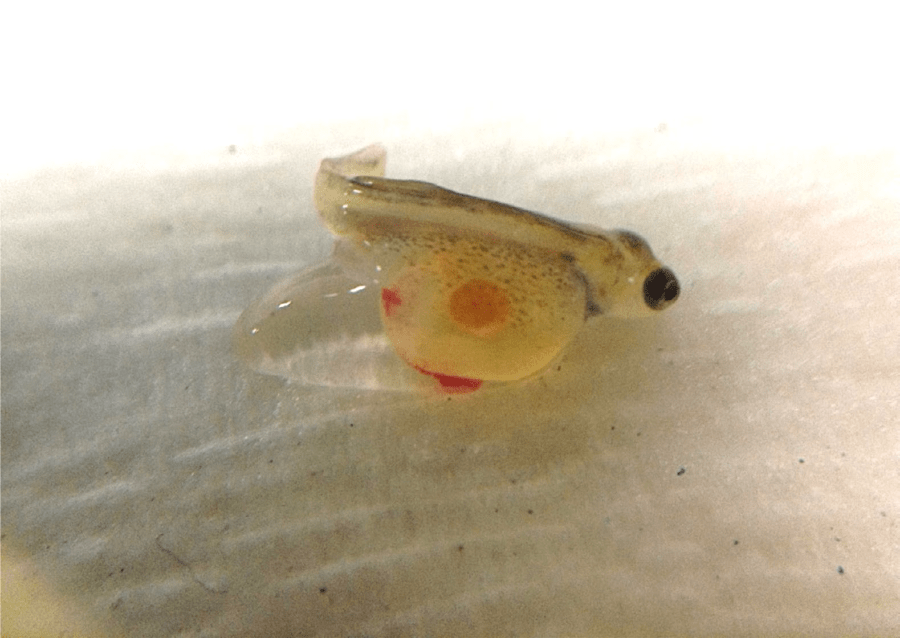Lake Champlain Atlantic salmon have potential to naturally adapt in response to invasive species impacts
Project summary:
A 2019 study by Avril M. Harder et al. explored whether genetic variation in Lake Champlain Atlantic salmon was sufficient for a rapid “evolutionary rescue” adaptation to low-thiamine food sources in Lake Champlain caused by invasive species.
Thiamine (vitamin B1) deficiency is an increasingly common problem for Atlantic salmon as the introduction of invasive species alters the Lake Champlain food chain. Thiamine-deficient adult Atlantic salmon are unable to swim properly or remain upright in the water column. Thiamine-deficient salmon eggs exhibit defects, and newly-hatched fish from these eggs do not survive for longer than a few weeks. Studies have identified populations of Atlantic salmon that have genetically adapted to low-thiamine availability in other regions. In Lake Champlain, fertilized salmon eggs reared in hatcheries are treated with supplemental thiamine, which may decrease the pressure that would cause the population to rapidly adapt to new environmental conditions.

Key results:
- Through RNA sequencing, this study suggests that natural genetic variation in the Lake Champlain Atlantic salmon population could lead to successful adaptation to a low-thiamine environment through evolutionary change in response to the pressure of low-thiamine availability.
- The study found that thiamine treatment of salmon eggs greatly increased survival over non-treated eggs, however some eggs were able to survive without thiamine treatment.
- The high mortality of untreated eggs indicates that thiamine deficiency would act as a strong pressure for selection.
- The authors suggest that the minimal natural reproduction of salmon in Lake Champlain, coupled with thiamine-treatment of all released salmon, could be inhibiting the successful reintroduction of salmon.
Other takeaways:
Understanding the types of genetic variation that allow for adaptation can inform management and conservation strategies. The results of this study can guide hatchery programs to avoid adaptations that would not be advantageous in the wild. Additional research is needed to determine the potential response of a wild Atlantic salmon population in Lake Champlain to low thiamine availability.
Read more here:
Harder, Avril, Willoughby, Janna, Ardren, William, Christie, Mark (2019). Among family variation in survival and gene expression uncovers adaptive genetic variation in a threatened fish. Molecular Ecology, 29, 1035-1049. https://doi.org/10.1111/mec.15334